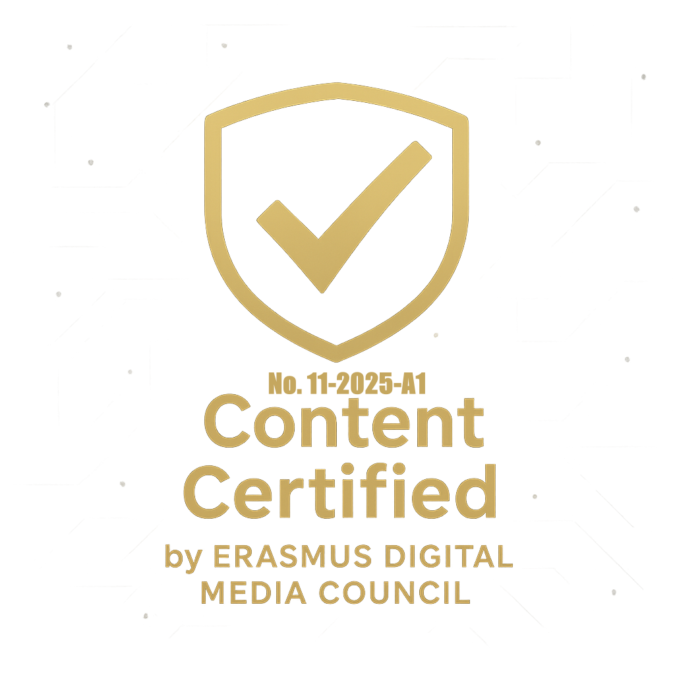
Key Points
- YouTube rolls out Gemini-powered Ask button for select users globally
- Feature enables instant video summaries, explanations, and content-based quizzes
- Ask button located between Share and Download options on all platforms
- Currently available in India, USA, Canada, and New Zealand for users 18+
- Powered by large language models for context-aware responses
- AI Super Resolution feature upscales low-quality videos to HD and 4K
New Delhi: YouTube has fundamentally reimagined how viewers engage with video content through its groundbreaking Ask feature, powered by Google’s advanced Gemini artificial intelligence. This innovative tool transforms the platform from a simple video streaming service into an intelligent, interactive learning companion that responds to user queries in real-time. The feature represents YouTube’s most significant step toward integrating conversational AI directly into the viewing experience, positioning the platform at the forefront of AI-enhanced content consumption.
The Ask feature leverages large language models to analyze video content and generate contextually relevant answers to viewer questions. Whether users need clarification on complex topics, want a quick summary of lengthy videos, or seek recommendations for related content, the AI assistant provides instant responses without requiring viewers to pause or leave the video. This seamless integration maintains viewer engagement while enhancing comprehension and learning outcomes across educational, entertainment, and informational content.
Locating and Accessing the Ask Button
YouTube has strategically placed the new Ask button, marked with the distinctive Gemini icon, in a prominent yet non-intrusive location within the video player interface. The button appears directly below the video player, positioned between the familiar Share and Download options, ensuring easy discoverability for users exploring the feature. This placement follows YouTube’s design philosophy of integrating new features where users naturally look for interactive options.
The feature demonstrates YouTube’s commitment to cross-platform functionality, as the Ask button is available across all major devices including Android smartphones, iOS devices, and Windows PCs. This universal accessibility ensures that viewers can enjoy the enhanced interactive experience regardless of their preferred viewing device or platform. The consistent placement and iconography across platforms make the feature immediately recognizable once users encounter it on any device.
How the Gemini-Powered Feature Works
When users tap or click the Ask button, a streamlined chat window appears on screen, providing an intuitive interface for conversing with the AI assistant. The chat experience closely mirrors Google’s standalone Gemini assistant, offering both manual text input and pre-populated prompt suggestions to lower the barrier for engagement. Users can type specific questions tailored to their curiosity or select from suggested queries that YouTube’s AI has determined might be relevant to the current video.
The pre-populated suggestions typically include commonly requested actions such as “Summarize the video,” which provides a concise overview of the main points; “Recommended Content,” which suggests related videos based on the current topic; and context-specific prompts that vary depending on the video’s subject matter. Within seconds of submitting a query, the Gemini-based large language model processes the request, analyzes the video content and related information from YouTube’s vast library and the broader web, then generates a comprehensive answer displayed directly in the chat interface.
YouTube has implemented a responsible AI approach by including disclaimers reminding users that AI systems can occasionally make mistakes and encouraging viewers to verify important information independently. This transparency acknowledges the limitations of current AI technology while still providing valuable assistance for content discovery and comprehension.
Global Availability and User Requirements
YouTube’s Ask feature is currently in a controlled rollout phase, available to both YouTube Premium subscribers and non-Premium users who meet specific eligibility criteria. The platform has implemented age restrictions, limiting access to viewers aged 18 and above, likely due to considerations around AI safety, content appropriateness, and regulatory compliance in different markets.
The feature currently supports English language interactions exclusively, though YouTube’s history of expanding language support for successful features suggests additional languages will follow as the technology matures. The initial rollout targets four key markets: India, the United States, Canada, and New Zealand. These countries represent diverse geographic regions and user demographics, allowing YouTube to gather comprehensive feedback across different viewing habits and content preferences.
YouTube has confirmed plans to expand the Ask feature to additional countries in the coming months, though specific timelines and target markets have not been disclosed. This phased approach allows the company to refine the AI’s performance, address technical challenges, and incorporate user feedback before committing to a full global launch.
AI-Powered Video Enhancement Technology
Beyond conversational AI, YouTube has introduced a complementary innovation called Super Resolution, which uses artificial intelligence to automatically upscale low-quality videos to high-definition resolutions. Announced in late October 2024 and rolling out in phases, this feature addresses a longstanding challenge facing the platform: millions of videos uploaded before HD became standard remain locked at lower resolutions, diminishing viewer experience on modern high-resolution displays.
The Super Resolution technology analyzes videos originally uploaded below 1080p resolution and generates enhanced versions using sophisticated AI algorithms. YouTube’s initial focus targets standard-definition content for upscaling to HD quality, with ambitious plans to support resolutions up to 4K in the future. When a video has been AI-enhanced, viewers will see a “Super Resolution” label in the video quality settings menu, allowing them to toggle between the upscaled version and the original upload.
Creator Control and Content Preservation
YouTube has emphasized its commitment to creator autonomy by ensuring that Super Resolution operates as an optional enhancement rather than a mandatory replacement. The platform preserves all original video files and resolutions, giving content creators complete control over how their work is presented. Creators who prefer their videos remain at the original upload quality can easily opt out of AI upscaling through their YouTube Studio dashboard.
This creator-first approach addresses potential concerns about AI modification of artistic content while still offering the benefits of improved viewing quality for audiences watching on modern devices. The dual-version system ensures that viewers accustomed to the original presentation can continue accessing it while new viewers benefit from enhanced visual clarity.
Implications for Content Consumption
The introduction of conversational AI through the Ask feature represents a paradigm shift in how viewers consume and learn from video content. Educational channels, tutorial creators, and complex subject matter experts particularly benefit from this technology, as viewers can now receive instant clarification on confusing concepts without scrolling through comment sections or conducting separate web searches. The feature effectively transforms every YouTube video into an interactive learning experience with an AI tutor standing by to answer questions.
For casual entertainment viewing, the Ask feature enhances content discovery by providing personalized recommendations based on specific aspects of videos that resonate with individual viewers. If someone particularly enjoys a certain segment or topic mentioned in a longer video, they can ask the AI to find similar content, creating more relevant viewing pathways than traditional recommendation algorithms alone.
Privacy and Data Considerations
While YouTube has not released detailed documentation about data handling for the Ask feature, the integration with Google’s Gemini AI suggests that user queries and interactions may be processed using Google’s existing AI infrastructure. Users concerned about privacy should consult YouTube’s updated terms of service and privacy policies to understand how conversational data is collected, stored, and potentially used to improve AI models.
The feature’s ability to draw information from both YouTube’s content library and the broader web raises questions about source attribution and information accuracy. YouTube’s inclusion of AI accuracy disclaimers indicates awareness of these concerns, though the platform will likely need to continue refining how the AI cites sources and distinguishes between verified information and speculative content.
Future Development and Expansion
YouTube’s rollout of both conversational AI and video enhancement technologies signals the platform’s strategic commitment to AI integration across its entire ecosystem. Industry observers anticipate that successful deployment of the Ask feature could lead to more sophisticated capabilities, such as timestamped answers that link directly to relevant video segments, multilingual support that breaks language barriers for global content, and personalized learning paths that adapt to individual viewer comprehension levels.
The combination of interactive AI assistance and automatic quality enhancement positions YouTube to maintain its dominance in online video as competitors increasingly integrate similar technologies. As the features exit testing phases and reach global availability, millions of viewers worldwide will experience a fundamentally transformed relationship with video content, one where passive watching gives way to active, AI-mediated engagement and learning.



















































